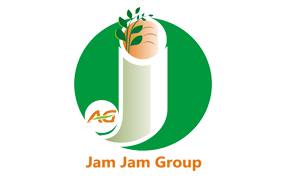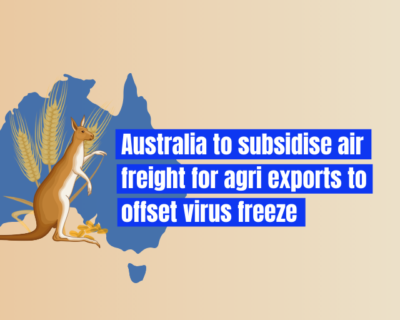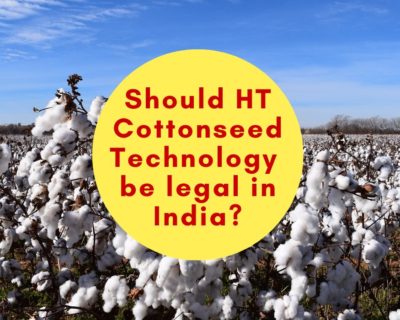The fourth industrial revolution in agriculture
For agribusinesses, implementing new technologies requires focusing on four critical capabilities.
Do all cows’ faces look the same to you? They don’t to systems powered by artificial intelligence (AI). Bovine facial recognition technology, developed through a strategic partnership between Cargill and an Irish technology company called Cainthus, equips barns and fields with smart cameras that can identify each cow in a herd in seconds based on facial features and hide patterns. Linked to machine learning software, the system determines whether a cow isn’t eating or drinking enough, or if she’s sick, and can alert the farmer via smartphone app. It can also look at the whole herd’s behavior to identify how best to distribute feed or schedule cows’ stints in a specific pen or in the field. Over time, the platform learns from what it sees and begins to automate more of the daily care for each animal.
The fourth industrial revolution (4IR) is starting to change how every agricultural player, from a family farmer to a global conglomerate, produces food and related products. The spread of the so-called essential eight technologies — including AI, blockchain, drones, and the Internet of Things (IoT) — to agriculture is leading to increased yields, lower costs, and reduced environmental impact. These tools are also empowering farms to unlock new plant-based innovations and increasing their resilience to extreme weather events and climate change.
Significant money is at stake. In 2018, agritech startups raised US$16.9 billion, a 43 percent increase over the year before. As compatible technology and high-speed wireless networks spread more quickly — telecom operators are planning to invest as much as $1 trillion on 5G infrastructure by 2025 — the adoption of agriculture-related technology will accelerate.
However, this revolution in agriculture imposes new demands on producers and the organizations that serve them. To thrive in 2030 and beyond, agricultural companies must choose carefully among the new technologies, to avoid wasting time and money or — worse — missing out on critical opportunities. Many companies will also need to change how they organize themselves and their business lines to best use these technologies.
The right approach to all these challenges requires that companies define their place in the digitized world of agriculture, then identify and develop the right capabilities system to succeed in it.
Digital platforms for farm animals and robot swarms
We cannot know exactly how the world will look in 2030, but existing megatrends indicate the likelihood of more people, more of whom will live in cities; more extreme weather shocks and natural disasters; greater pressure on fresh water, arable land, and other natural resources; and overfished, overheating, and rising oceans. That may sound bleak, but with the right approach, agriculture companies can feed this near-future planet better than ever, while reducing pressure on resources.
A tremendous variety of technologies are currently in development. One Brazilian company, for example, offers a system that uses drones and IoT sensors to gather data on pigs and their environment. It enables swine farmers to enter further information, such as the pigs’ weight or births, into the system by simply speaking into their phones. Analytics, synchronized across the swine farmer’s entire operation, provide visuals on every stage of production. Farmers can share the information with suppliers of feed and medicines, or establish key performance indicators for supervisors and managers. Other companies have similar solutions on the market for other types of livestock.
Some 4IR agriculture technologies seem to come straight out of science fiction. One firm is developing a swarm of miniature autonomous robots that can plant seeds. Controlled by a farmer’s handheld tablet, which is operated with the help of satellites and cloud-based software, the swarm will be able to put each seed in the right place with greater precision than current approaches can. Not incidentally, the technology will eliminate the need for planter bars, tractors, and tractor operators. Because the swarm can adjust seed locations for changing conditions, it will increase yield, with lower costs, faster planting speeds, and a reduced impact on the environment.
So many new technologies, products, and services are appearing that the entire sector will soon be unrecognizable to participants of a generation ago. To prepare for this future, agricultural companies must take the right steps right now.
Don’t simply digitize existing business models
The most common response among companies has been to plug new technology into old business models, with the hope of enhancing those models with smarter tools and more data. But that tactic is flawed. Making old models work better isn’t enough — not when technologies are enabling all-new models that can render the old ones obsolete.
Many pesticide and fertilizer companies, for example, are using 4IR technologies to provide better products and roll them out faster than before. That might sound like a success story, but precision farming — which uses IoT sensors, high-resolution 3D aerial imagery from drones, and AI-powered analytics to analyze the characteristics of soil and the behavior of crops down to the square inch — may soon significantly reduce the need for fertilizers and pesticides altogether.
A better approach for those manufacturing companies is to discover and develop these new business models, creating new markets along the way. Instead of looking for a better product, companies should look for better solutions for the problems that their customers face, whether those customers are farmers, agricultural suppliers, or end consumers. Many successful solutions will bring together products and services from multiple companies, rather than just using products manufactured by the solution provider.
To determine which solutions to offer and how to offer them, companies need to fully understand their current competitive position, including its strengths and vulnerabilities. Leaders can then determine where they want to compete in the agriculture ecosystem of the future. In whichever competitive position they choose, they will need the right capabilities to win. Organic innovation, joint ventures, incubators, and acquisitions should all be considered to get an organization learning and evolving.
Four capabilities for winning in 2030 and beyond
Companies will need many different capabilities, depending on their chosen competitive position. But for nearly every agricultural player, four key capabilities will serve as a foundation of success.
Generating a “so what” from data through digitized operations and advanced analytics
Digitization is perhaps the clearest example of how 4IR technologies can, and should, go beyond simply making traditional business models work better. New technologies are leading an all-new agriculture value chain, with digital businesses at each link of that chain tapping into new revenue streams.
These forward-looking agricultural companies don’t just capture and harness data. They help clients figure out what data they need and how they will get it; they also help standardize and analyze data to recognize patterns and formulate recommendations. In other words, they generate a “so what” from the reams of data in which so many organizations are currently drowning.
In practice, producing this “so what” usually means applying analytics in order to operate equipment more efficiently; determine more accurate feed formulations; manage animal well-being; create marketplaces; and better manage logistics, pricing, customer performance, and more.
Many pesticide and fertilizer companies, for example, are using 4IR technologies to provide better products and roll them out faster than before. That might sound like a success story, but precision farming — which uses IoT sensors, high-resolution 3D aerial imagery from drones, and AI-powered analytics to analyze the characteristics of soil and the behavior of crops down to the square inch — may soon significantly reduce the need for fertilizers and pesticides altogether.
A better approach for those manufacturing companies is to discover and develop these new business models, creating new markets along the way. Instead of looking for a better product, companies should look for better solutions for the problems that their customers face, whether those customers are farmers, agricultural suppliers, or end consumers. Many successful solutions will bring together products and services from multiple companies, rather than just using products manufactured by the solution provider.
To determine which solutions to offer and how to offer them, companies need to fully understand their current competitive position, including its strengths and vulnerabilities. Leaders can then determine where they want to compete in the agriculture ecosystem of the future. In whichever competitive position they choose, they will need the right capabilities to win. Organic innovation, joint ventures, incubators, and acquisitions should all be considered to get an organization learning and evolving.
Four capabilities for winning in 2030 and beyond
Companies will need many different capabilities, depending on their chosen competitive position. But for nearly every agricultural player, four key capabilities will serve as a foundation of success.
Generating a “so what” from data through digitized operations and advanced analytics
Digitization is perhaps the clearest example of how 4IR technologies can, and should, go beyond simply making traditional business models work better. New technologies are leading an all-new agriculture value chain, with digital businesses at each link of that chain tapping into new revenue streams.
These forward-looking agricultural companies don’t just capture and harness data. They help clients figure out what data they need and how they will get it; they also help standardize and analyze data to recognize patterns and formulate recommendations. In other words, they generate a “so what” from the reams of data in which so many organizations are currently drowning.
In practice, producing this “so what” usually means applying analytics in order to operate equipment more efficiently; determine more accurate feed formulations; manage animal well-being; create marketplaces; and better manage logistics, pricing, customer performance, and more.
This post has been published in strategy + business news feed without modifications to the text.







